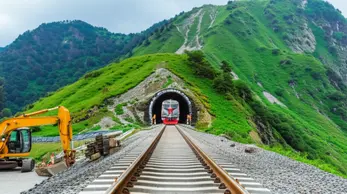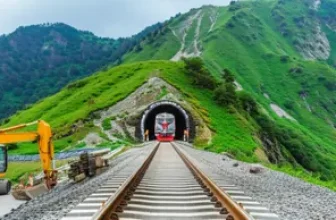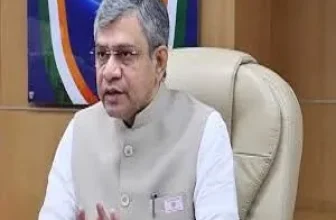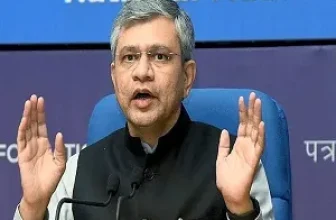
In a remarkable step toward enhancing safety and operational efficiency, the West Central Railway (WCR) has rolled out an innovative signal control technology at the Nishatpura yard in Bhopal. This new system, powered by optical fibre technology, replaces the outdated wiring methods that have long been a part of railway operations.
This pivotal upgrade marks a significant leap forward for Indian Railways, a sector that is continually striving for modernization. The introduction of this optical fibre-based signal control technology promises not only to improve the speed and reliability of signal transmissions but also to mitigate delays and malfunctions that have plagued the traditional multi-wire mechanisms.
According to WCR’s Bhopal division’s Public Relations Officer (PRO), Naval Agrawal, this system is a game-changer for the railway industry. “This first-of-its-kind cutting-edge technology will play a key role in making Indian Railways safer and more technologically advanced in the coming years,” he stated, highlighting the benefits this modernization can bring to train operations across the country.
The newly introduced signal control technology is characterized by its adoption of the Lamp Output Module (LOM). This device is integral because it facilitates the direct communication of signal commands from the control room to signal posts via optical fibre cables. This method eliminates the need for bulky wiring systems, resulting in smoother and more uninterrupted signal operations.
One of the most compelling advantages of this optical fibre-based technology is its reliability. Agrawal explained that even in the event of a failure in one component, signals remain visible to approaching trains, presenting a stark contrast to the vulnerabilities posed by traditional systems. Furthermore, the introduction of automatic cooling fans ensures that the equipment operates within safe temperature limits, enhancing its durability.
The phased implementation of this new technology has already begun in the Bhopal-Bina railway section, with plans to complete the rollout by June 2026. As part of this initiative, two signal posts at the Nishatpura yard have already been equipped with the upgraded system, setting a precedent for future installations.
Another crucial aspect of this optical fibre system is its ease of maintenance. With reduced hardware requirements and a streamlined setup, railway staff can handle maintenance tasks more efficiently, which is expected to reduce operational costs significantly.
This transformation in signal control technology reflects a broader commitment by the Indian Railways to embrace modern advancements and enhance passenger safety. By adopting more technologically robust solutions, the railways aim to ensure trains run with greater punctuality and safety.
The Bhopal division’s initiative is indicative of the larger trend in India’s transportation sector, which is gradually shifting toward more integrated technological solutions. As the railway system continues to adapt and modernize, it opens the door for future innovations that can further strengthen its operations.
In conclusion, the introduction of optical fibre-enabled signal control technology at Nishatpura yard signifies a vital step towards a safer, more efficient railway system. This advancement not only embodies the essence of modernity but also showcases the dedication of West Central Railway to leading Indian Railways into a new era of transportation excellence.






